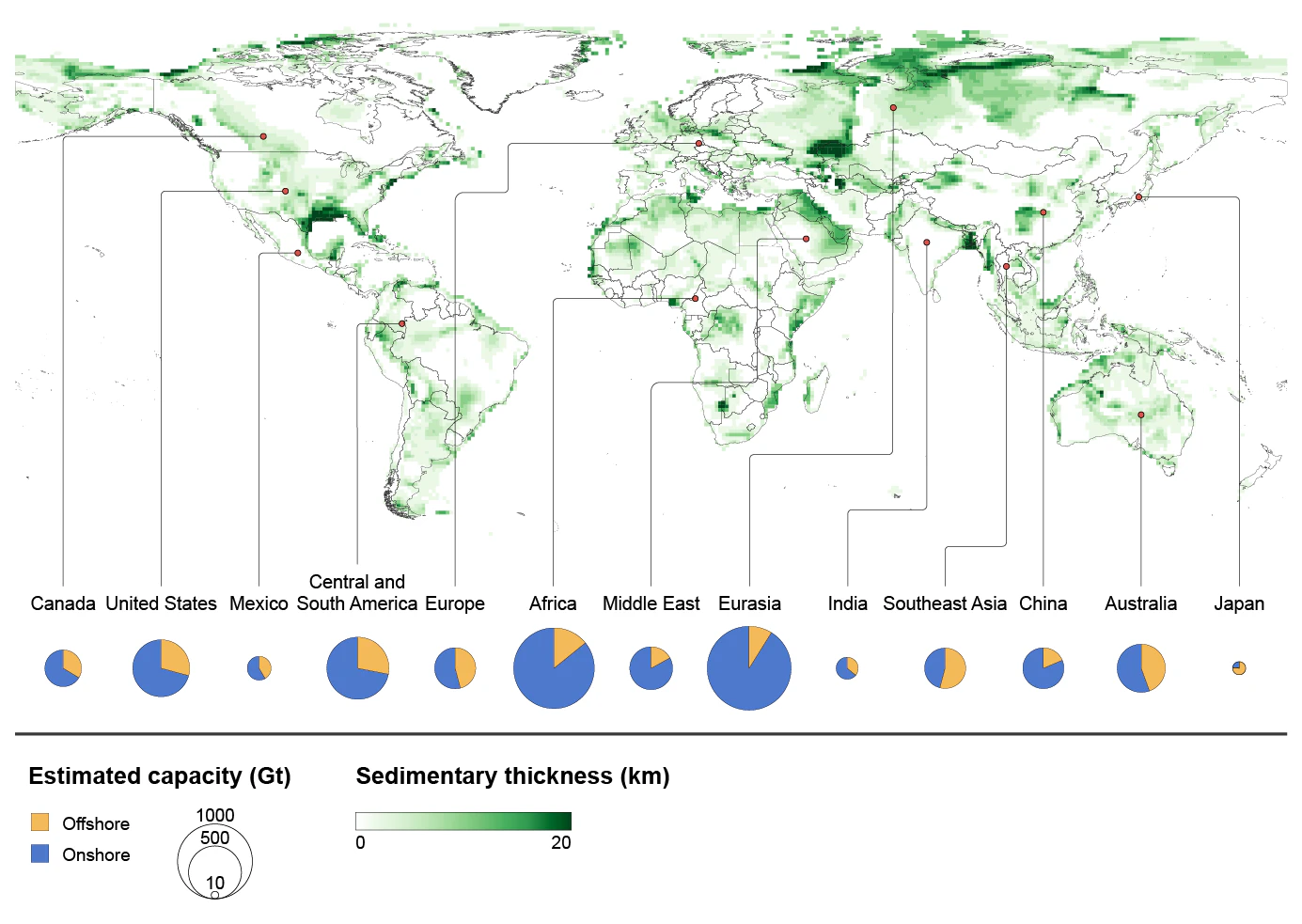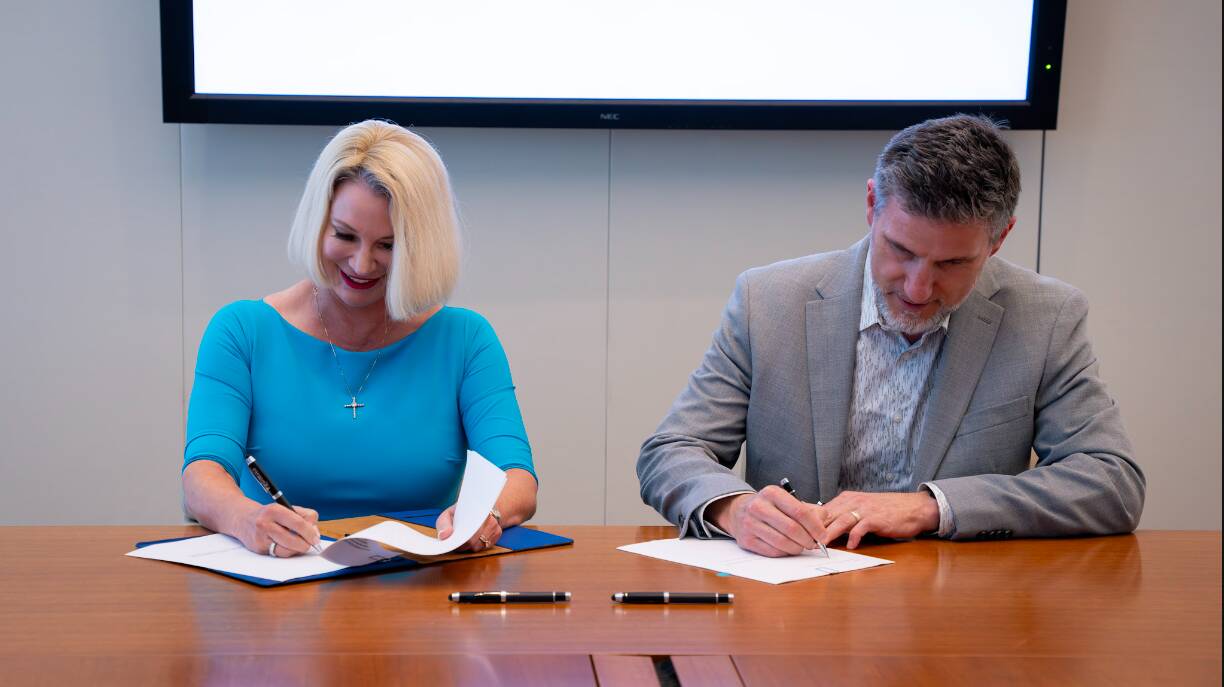selected item
11 trillion elephants, and other answers on CO2 storage
In my work, and even among friends and family, I get a lot of questions about carbon capture and storage – particularly the “storage” part.
Most people understand why we want to capture carbon dioxide (CO2) emissions before they reach the atmosphere, where they can contribute to climate change. But they often don’t understand how or where the CO2 is stored.
I’d like to address some of the most common questions I hear – and clear up some misperceptions I think are out there.
What happens to the captured CO2? After it’s been captured from a power plant or industrial source, the CO2 is compressed, transported (usually via pipeline), and injected into storage deep underground.
Where is the CO2 stored? One option is where we got oil and natural gas from in the first place: the microscopic holes in rock formations thousands of feet below ground; the space the oil and gas occupied can be refilled with CO2. But the biggest potential storage capacity is actually in saline formations – porous rocks deep underground that hold undrinkable water. They’re found all over the world, and if located close to an emissions source, they can reduce the cost of transporting the captured CO2.
Is there enough capacity? More than enough. The International Energy Agency (IEA) and other renowned experts estimate there’s enough storage capacity worldwide to hold upwards of 55,000 gigatons. To help visualize how big that number is, consider that one gigaton is a unit of mass roughly equivalent to 200 million elephants. So we’re talking about storage equivalent to 11 trillion elephants.

Is it safe? Yes, and we’ve being doing it for decades. Storage sites are carefully selected only after rigorous analysis to ensure they’re geologically suitable. Once injected, the CO2 is capped by an impermeable seal of rock to prevent any potential leakage. The storage sites are thousands of feet underground, far below drinking water supplies, and they’re constantly monitored for any potential changes.
What else can be done with CO2? Once captured, some CO2 can be utilized instead of stored – which is why you sometimes hear the term “carbon capture, utilization, and storage,” or CCUS for short. One common use today is enhanced oil recovery. Some more innovative options are being developed – such as using CO2 to make eFuels, or turning it into a mineral for use in building materials or industrial processes. But for now, these options are still at a very small scale – and a very high cost.
ExxonMobil is a global leader in carbon capture and storage, or CCS: We have more than 30 years’ experience and have captured more man-made CO2 than any other company.
And we’re scaling up even further. We’ve announced several CCS projects, including one at our Baytown complex and ones for CF Industries, Linde and Nucor. In fact, the total CO2 we’ve agreed to transport and store for our customers has reached 5 million metric tons per year. That’s equivalent to replacing about 2 million gasoline-powered cars with electric vehicles, which is roughly equal to the total number of EVs on U.S. roads today.
But we’ll need to scale up carbon capture and storage much more if we’re going to meet the world’s climate goals, because it’s one of the few options for significantly reducing emissions from the heaviest-emitting sectors: power generation, commercial transportation, and heavy industries like steel and cement.
As the IEA says, carbon capture and storage “will need to be a key pillar in successful clean energy transitions.”
Have more questions? Check out these FAQs from the U.S. National Energy Technology Laboratory or this IEA report, which contains more details about capacity and safety, and has some great charts.
Prasanna Joshi is vice president for ExxonMobil Low Carbon Solutions technologies.
Explore more

Capture it. Move it. Store it: Three steps for reducing CO2 emissions
2 min read
• Aug. 12, 2025
How we’re capturing carbon and storing it safely
2 min read
• May 5, 2025
Calpine, ExxonMobil sign CO2 transportation and storage agreement for power generation project
2 min read
• April 23, 2025
2024: A breakout year for our carbon capture and storage business
3 min read
• Jan. 9, 2025
Steel, ammonia and AI? Oh my! What can’t our CCS help decarbonize?
4 min read
• Dec. 11, 2024
ExxonMobil secures largest CO2 offshore storage site in the U.S.
3 min read
• Oct. 10, 2024
